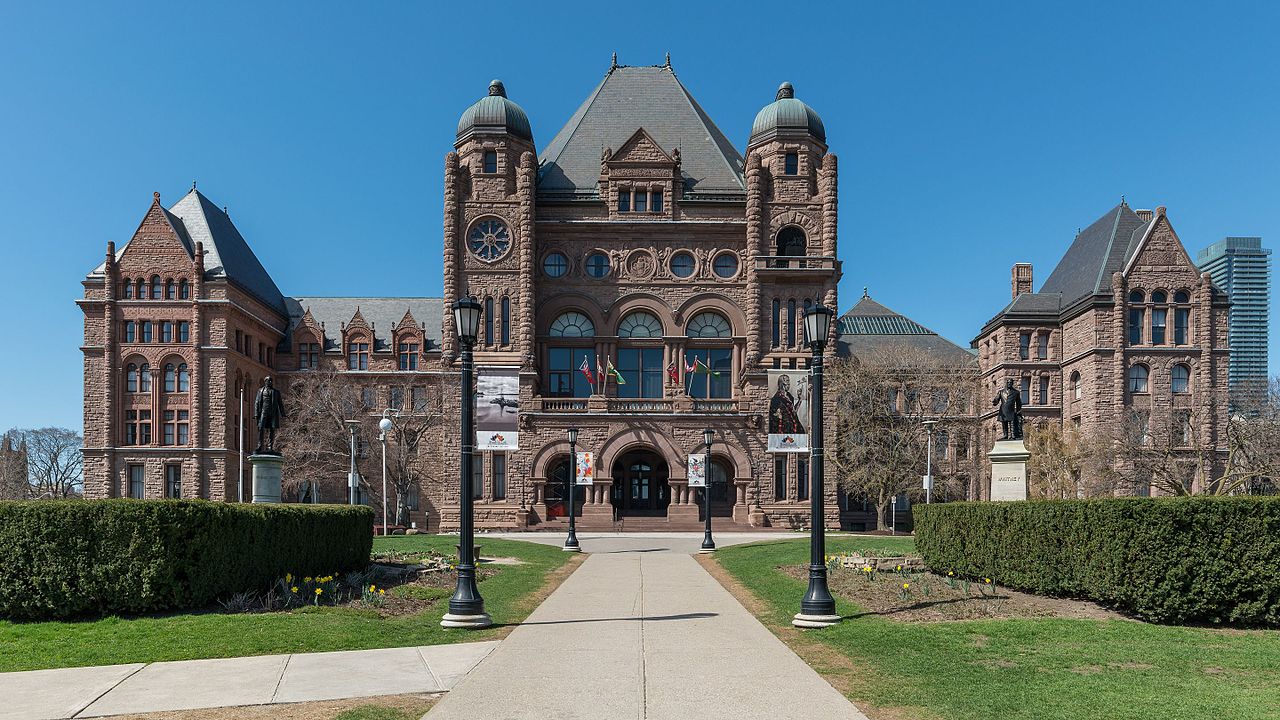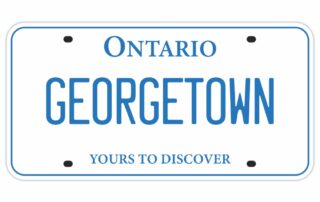Divorce in Ontario: Ignore The Obvious At Your Peril

What You Need To Know Before You Go
Before I became a Mediator I was in Family Court. I always recall the response I received from His Honour John McDermott, a sitting Family Court Judge in Newmarket, Ontario, when I asked him for a court order to compel my former spouse and co-parent to disclose her financials. This was 2 years into our divorce proceedings and I was still waiting for my spouse to comply with an earlier court order. and I told him the system was broken.
His reply? “Yes, it is, but it is the only system we have and you are in my courtroom.”  It was a reply that he delivered with genuine empathy but unmistakable authority. And it brought to my mind the phrase ‘willful blindness’ – that state of deliberate ignorance.
It was a reply that he delivered with genuine empathy but unmistakable authority. And it brought to my mind the phrase ‘willful blindness’ – that state of deliberate ignorance.
The night before my exchange with Justice McDermott, I finished a Margaret Heffernan book called ‘Willful Blindness: Why We Ignore The Obvious At Our Peril’, a book that deals with some of the world’s great injustices. (See also her TED talk here.) I experienced a rush of anxiety.
My blood felt like sand running through my veins. It was followed by the realization that my family ( I had three children aged 6, 9 and 13) were at peril. Our finances had already taken a beating in those 2 years and they were likely to take even more of a hammering.
After all, my lawyer was charging $350 per hour and the ominous ticking of the meter running was ringing in my ears. In my mind’s eye, I had visions of me scaling down a 20,000 foot mountain called Divorce In Ontario.
Yet I only had 10,000 foot of rope. I was going to run out before I reached the end and plunge into the abyss. It was a situation I could no longer ignore, and while it was too late for the money that had already gone, I had to do something to stop more damage being done to the family finances. I had a powerful sense of being cheated, lied to and taken advantage of.
Raised to be a proud Canadian, in a compassionate country governed by the rule of law and fairness, suddenly and shockingly, my eyes had been opened to things most Canadians never have to see – the seedy underbelly of my nation. And it did not feel good at all. From that moment on, I knew I had to do whatever I could to prevent others being exposed to this dark side of Canadian life.
Reaching a breaking point

People get as much justice as they can afford, unfortunately people cannot afford much justice!
Family justice in Canada is reaching a breaking point. And yet many separating spouses are forced to apply for a divorce in flawed and floundering system.
Serious structural problems in Family Law in Ontario
There are serious structural problems plaguing divorce in Canada and affecting how the Canadian justice system deals with family disputes. As a nation known internationally for being peacekeepers, we really need to think seriously about completely overhauling the family justice system to keep the peace within our own borders and within Canadian families. 
The first blueprint for this complete overhaul was tabled by Senator Anne Cools in her 1998 white paper “For The Sake Of The Children” – the same year my middle-child was born. My daughter has now graduated and is working as a nurse. Anne Cools has recently retired.
Yet still, in spite of her efforts to reform things, nothing has happened. Public confidence in the system that handles applications for divorce in Ontario is at an all-time low. The number of people representing themselves in their separation without using lawyers continues to rise.
People are opting out of the system altogether. Surely there’s no bigger sign that root and branch change to family law is needed. New alternatives must be considered, no matter how far-fetched they seem.
Was Chief Justice Warren Winkler on to something?
Chief Justice Warren Winkler proposed solutions back in 2010, on the heels of a report entitled “Voices From A Broken Family Justice System“. This no holds barred report details just how seriously broken family law in Ontario is.
His manifesto was based on a premise that most people can’t afford to have their personal finances destroyed, and handle the emotional toll of navigating the life-sucking process of divorce by family courts in Ontario.

Video: Winkler: No more studies needed!
Litigants are representing themselves
The adversarial nature of family law
Herein lies one of the big problems with lawyers and divorce in Ontario, or anywhere in the world for that matter.
The adversarial, them versus us approach that might work for certain disputes, causes nothing but emotional and financial harm in separation cases, preventing spouses from having reasonable relationships with each other following their split, often at the expense of their children’s wellbeing.

Video: Adversarial System: The Gladiator in the Coliseum
Before the Pandemic - Over half of divorces filed were over 4 years old
The reasons why the adversarial approach to starting a divorce is so damaging is because family lawyers and judges who work on these cases simply do not have enough training or experience of handing the psychosocial and other impacts of family conflicts. They are not equipped to deal with the often delicate issues involved in separation cases.
The result of this lack of understanding on both sides, the lawyers and judges on one, and spouses having to represent themselves on the other, is a growing backlog of family law cases. Unsuitable claims and lack of evidence are causing delays and adjournments, which in turn means it takes longer for cases to come to trial.
The statistics support this, with federal government data from 2015 showing that over half of divorces filed were over 4 years old. Despite this, efforts to drive reforms to the flawed family law system have met with limited success. Things looked like they were going to finally change in 2012-14 thanks to the publishing of six reports relating to access to family justice:
- 1) Prof. Julie MacFarlane’s study of the experiences of those who go to court without lawyers.
- 2) The Family Justice Working Group of the National Action Committee on Access to Civil and Family Matters.
- 3) The Canadian Bar Association’s Access to Justice Subcommittee.
- 5) Canadian Constitution Foundation and Frontier Centre for Public Policy: Ideology And Dysfunction In Family Law
- 6) The Vanier Institute of the Family – Divorce, Separation and Uncoupling in Canada
These reports were responsible for spurring a spate of reform initiatives across Canada, but much like Anna Cools’ earlier attempt, they merely fizzled in most of Canada without fully taking off, the exception being British Columbia where reforms were made.
It shows that reform can happen. And just how quickly was aptly illustrated following the legalization of same sex marriages. In a lightning-fast 3 months, the legal changes were made to the Divorce Act to ensure it applied to same sex couples – a new revenue stream right there for lawyers to exploit! Perhaps that helps explain why change happened so quickly?
Reforms are bogged-down by words
Lawyers can always be relied on to slow down change, as has been illustrated across Canada. Yes, there have been changes, but these have just applied to the use of words, as in Alberta in 2005 where any terms that suggested conflict such as ‘custody’ were replaced with ones that were focused on softer-sounding ‘parental responsibilities’. British Columbia did something similar eight years later, while Nova Scotia reviewed their word usage and decided to keep terms such as custody in 2017. But now there is a bill in that territory that proposes sweeping changes to the Divorce Act, following the trail blazed by Alberta and British Columbia.
Changes that will increase the factors that need to be considered when assessing the interests of children in separation cases. Another change happening right now is the implementation of early intervention initiatives designed to reduce conflict between spouses and seek opportunities for an amicably negotiated settlement.
I have replaced the words “custody and access” with the words “on-duty and off-duty” parenting in agreements for 10 years. Why? because at the end of the day..parents are always parents. Regardless if the parents are with the children, acknowledgement and respect goes along way when arriving at a settlement. More change is afoot in certain territories, and not before time.
Unified Family Courts, first established in Ontario back in 1977 and designed to streamline processes and improve divorce outcomes are due to finally arrive in Alberta in 2020. But why the 43-year wait? Especially after a Canadian Research Institute Report in 2016 revealed that most family lawyers practicing in areas with a Unified Court agreed they simplified procedures, provided citizens with easier access to family justice services and produced more tailored divorce outcomes.
Despite change, problems with Family Law in Ontario persist
What lawyer charge remains at the heart of the issue, it’s fair to say that many practicing family lawyers are focused on seeking a peaceful settlement rather than resort to litigation, even though they stand to benefit financially from the latter.
But the sheer expense of hiring a lawyer stems from the high-cost structures they’ve created for themselves, added to the Law Society fees, and insurance premiums, bar dues, and professional memberships that all require paying. What’s more, their commercial offices and the expense of hiring staff to help them behind the scenes all add up.
So practicing law is expensive, and to be fair to family lawyers, they typically earn significantly less than those who specialize in other areas. These high costs, coupled with too many family lawyers chasing too few clients, has created a toxic environment for families.
Lawyers are finding they need to ‘hang-on’ to clients for longer to remain economically viable. All this is making divorce in Ontario an expensive and drawn-out process whenever lawyers get involved.
Where are all the Family Law Reformers?
All those critics of Family law in Ontario, all those who would champion change, seem to have fallen silent. But why is this? It could be because the public’s view of family law remains a little on the unsavoury side.
Or maybe it’s a case of until something bad happens to me, I’ll stay silent? Others might think that those involved in family law proceedings have caused their own problems, so should, therefore, deal with them by themselves.
Whatever the reason, the slow pace of change, even in British Columbia, leads me to believe that the best way to get things moving is to mobilize those people who are disaffected with the system.
If enough rise-up and make their feelings known, surely that will spur the politicians into action.

Video: Pickets go up at Ontario Family Court
How to improve Family Law in Ontario
Enough of the detailing the faults with the current situation. Time to suggest some ways to improve things. And let’s start by saying that more legal aid funding isn’t the answer. It simply isn’t on the cards, although it’s something that has been requested for decades.
Right now, legal aid funding for Family Law matter is only available to those on social assistance (for the most part). If you make minimum wage or above, forget it. Similarly, a reduction in lawyers’ fees isn’t going to happen anytime soon. Those expenses we outlined earlier remain. So we need to look elsewhere.
The first step to better Family Law in Ontario
To start making changes, lawyers need to be encouraged to take on more family law work on an unbundled basis. Many see such unbundled services as not being proper work, and work that pays poorly.
They prefer to take an all or nothing stance, selling a bundle of unnecessary services to clients, or refusing to take on their case. My clients have told me that unbundled services are more accessible and affordable.
They also help them better understand the law and their options. The key here is finding a lawyer who’s prepared to offer unbundled services and give reasonable advice without trying to steer the case towards full-blown litigation.
Time to end the Family Law monopoly
People other than lawyers should be activated to assist clients with legal problems relating to their divorce, both in and out of court. Lawyers have held a monopoly on the delivery of legal services for long enough. And it’s now more evident than ever that the services they provide haven’t been compatible with the needs of the public.
They have failed. And this is so clear for all to see that surely there is a government official somewhere in the halls of power who is thinking that if the law industry continues to stand in the way of progress, to thwart innovation and fight to retain a status quo that isn’t fit for purpose, then the government needs to take their social licence away.

MPP Bailey Speaks to Provincial Parliament
After all, it’s been over 20 years since Anna Cools first advocated the need for change. The underswell of opinion shifting in favor of change probably explains recent shifts in stance by law societies in British Columbia and Ontario, in terms of letting non-lawyers offer legal services. This has resulted in amendments to the Legal Professions Act in British Columbia.
Of course, anyone offering more affordable legal services should be properly trained, fully insured and their conduct regulated by a code of ethics. And the services they are able to offer would need to be closely regulated by the government, the bench and the bar. In tandem with this, supporting the resolution of family disputes by routes that don’t involve litigation is crucial.
Family law is a special kind of civil dispute. There must be an end to the vast expenses being spent on a way of resolving disputes that’s inefficient, time-consuming and destructive to families, especially those with children. Precious little funding is going to areas such as counselling or mediation, and none at all to supporting private mediation services or arbitration or even collaborative negotiation.
These are services that have the best interests of families and their children at heart, and promote the importance of resolving disputes and disagreements quickly and cost efficiently. Surely they are deserving of a share of the public purse?
We have seen Willful Blindness Before - Many People Died
There is also a case for removing family law matters from the court process entirely. They require their own system with adversarial and non-adversarial options, as well as other education based services, such as parenting after separation, conflict management, employment and housing support, counselling for mental health matters and the like.
The key focus would be to promote the well-being of any children involved, with additional attention to be paid to getting parents to co-operate. All its rules should avoid legal jargon and be written in easy to understand language, tailored to the needs of families living apart. It’s encouraging to see that change is happening, but it’s saddening and maddening that emotional damage and financial ruin has been allowed to continue for so long by the wilful blindness being shown by public officials and law lobbies.
This can be equated to the wilful blindness shown by tobacco companies when the damaging effects of smoking were known. The sweeping changes to the federal Divorce Act contained in Bill C-78 are a step in the right direction, but also merely a flash in the pan. There are deeper, structural issues to be addressed before divorce in Ontario can change for the better. And changes have to happen now.
It’s not easy to settle every aspect of a divorce in Ontario, or a separation without involving a professional, but there is simply no need to go to all the expense of hiring a lawyer who will drag you into the adversarial system.
And the sooner change and reform comes, the easier it will be for spouses to get the expert support they need, without breaking the bank.
Summing Up
Ontario Divorce outside of the broken system
It is no wonder so many informed separating spouses see family law as a toxic environment. Something to stay far away from and that is a good thing, The not so good part is when they short change themselves of a clear, certain and durable separation agreement. Given the state of divorce in Ontario, you can not blame them for taking matters in their own hands and draft their own separation agreement. Heck, I did the same back in 2007 before I became a mediator and later developed THE Soft Landing Divorce Settlement Method. You can read my separation agreement story here, I hope you can learn from my mistakes, I know I did.
With the self-drafted separation agreement, I often hear them say they have things worked out, and they just need help finalizing the details. In reality, there are usually big issues they haven’t considered or fully understood. These usually relate to:
- Child Support
- Misconceptions about spousal support
- Canada Revenue Agency Benefits and Credits Non-Compliance
- Unrecognized Tax Implications
- Assumptions that a 50/50 split of assets is the best way
- Concluding there’s no need for a parenting plan
- Failing to consider future living expenses after separation
If they don’t address these shortcomings, chances are they will be dragged into the same broken system that is divorce in Ontario, at some point down the road. The very system they are hoping to stay out of, that is what happened with me, consuming 2 1/2 years of my life and $85,000 in legal fees. These spouses will realize too late, they did need the help of divorce professionals, preferably a neutral one, to navigate the complexities of the divorce process. The mistakes they make now will inevitably cost them and their children further down the line.
16 Key Takeaways about Divorce Costs
- Court filing fees for divorce applications total $669.
- The average cost of divorce in Ontario has increased post-pandemic due to new economic realities.
- Cost structures vary based on divorce type (contested vs. uncontested).
- The average cost of an uncontested divorce remains lower if both parties agree on key issues.
- If you’re considering how much does a divorce cost, legal fees for uncontested divorces typically average around $1,500.
- Disputed divorces can cost between $25,000 to $250,000.
- Mediation can significantly reduce overall divorce costs, including court fees for divorce in Ontario.
- Uncontested divorces, including online options, are the cheapest choice, requiring minimal court involvement and lowering the cost of online divorce overall.
- Complex cases with high assets or business interests can significantly increase the average cost of divorce
- Hidden divorce costs include counselling, temporary living arrangements, and refinancing.
- Alternative dispute resolution methods like mediation can help reduce divorce expenses, including court fees for divorce in Ontario.
- A “Blue Ocean Divorce” is a cost-effective, mediated agreement costing under $8,000.
- A “Red Ocean Divorce” involves high costs due to litigation, ranging from $25,000 to $250,000.
- Legal advice should be sought to understand potential outcomes and costs.
- Agreeing on child custody, spousal support, and property division minimizes costs.
- Professional mediation and financial planning are recommended for managing divorce costs effectively.
Rethinking “Lawyering Up”
10 Reasons to Seek Mediation and Financial Guidance First in Divorce
In the throes of a divorce or separation, it’s tempting to seek legal advice immediately – after all, isn’t that what we’re taught to do? However, while legal guidance is crucial, it isn’t necessarily the best first step. Separation and divorce proceedings are about 90% about finances and children rather than purely legal matters. Today, let’s debunk this misconception and explore why it might be better to collaborate with a mediator and CDFA before reaching out to a lawyer.
Timing is Everything
Like in life, timing is everything when it comes to hiring a divorce lawyer. Knowing when to seek legal counsel during a divorce or separation is crucial to achieving the best possible outcome. Here are some key considerations to determine the right time to hire a divorce lawyer:
Control the Process: Working with a mediator and CDFA, you and your spouse maintain control over the process, making decisions collaboratively instead of dictating them by attorneys or the court.
Financial Clarity: A CDFA brings financial expertise to your case, helping you understand financial decisions’ short- and long-term implications.
Comprehensive Disclosure: These professionals guide you in gathering necessary disclosure documents, ensuring no financial stones are left unturned before consulting a lawyer.
Focused Negotiations: Mediators help parties stay focused on their real intentions and the main issues, preventing distractions from the path of resolution.
Cost-Effective: Mediation and financial analysis can often be more cost-effective than immediately “lawyering up” while offering comprehensive guidance.
Reduced Animosity: Opting for mediation first may reduce the antagonism between parties. The traditional “lawyering up” approach can create an adversarial atmosphere that fuels hostility.
Holistic Approach: Mediators and CDFAs consider monetary and non-monetary aspects, such as children’s welfare, providing a more holistic view of your situation.
Informed Legal Decisions: A solid understanding of your finances and intentions empowers you to make more informed decisions when seeking legal advice.
Protection of Rights: The modern family law system ensures your rights are protected – consulting a mediator or CDFA first doesn’t negate this protection.
Better for Children: Focusing on finances and children first helps create a more stable environment during this transition, which is often better for children.
Remember, the goal is to make your divorce or separation as smooth as possible for all involved. Therefore, starting with a mediator and CDFA might not be the traditional route. Still, it could be right for you, providing clarity, control, and a comprehensive view of your situation before you step into a lawyer’s office. As always, every situation is unique, so consider your options carefully and seek the best approach for your family.
Get Acquainted Call
Do you want a Soft Landing?
Have a few questions?
Learn More:
Schedule a 15-Minute Complimentary Call
The Vanier Institute of the Family
Where to find a Separation and Divorce Mediator & other Neutral Professionals
If you feel my Soft Landing Divorce Settlement Method is not a good fit for you or my location is not convenient (and Virtual or Remote Location Mediation is not an option.) It is still vital that you mediate your separation and divorce. You can find a Mediator listed at following organizations:
- Ontario Association for Family Mediation
- Family Mediation Canada
- ADR Institute of Ontario
- Family Dispute Resolution Institute of Ontario (FDRIO)
Other Professionals working as Neutrals
Ken Maynard CDFA, Acc.FM
I assist intelligent and successful couples in navigating the Divorce Industrial Complex by crafting rapid, custom separation agreements that pave the way for a smooth transition towards a secure future. This efficient process is achieved in about four meetings, effectively sidestepping the excessive conflicts, confusion, and costs commonly linked to legal proceedings. Clients have the flexibility to collaborate with me either via video conference or in-person through a DTSW associate at any of our six Greater Toronto mediation centers, located in Aurora, Barrie, North York, Vaughan, Mississauga, and Scarborough.














































